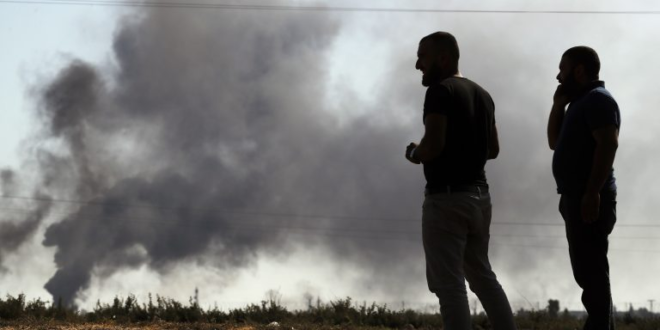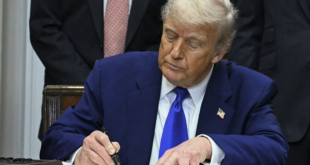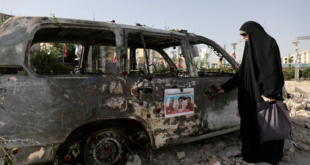The fall of the Assad regime in December 2024 has not ended Syria’s security challenges, as episodes of sectarian violence and Islamic State resurgence persist, exacerbated by foreign fighters embedded within fragmented militia networks.
Initial international efforts to expel foreign fighters fell short, leading to a policy shift toward integrating select foreign fighters into the Syrian military under the newly formed 84th Division.
The integration of transnational militants into Syria’s defense forces raises significant regional security concerns, notably for Israel and China, due to the fighters’ operational expertise.
The presence and potential defection of disaffected foreign fighters to violent non-state actors, such as ISIS and al-Qaeda, poses a persistent threat to Syria’s fragile transition and both regional and international security.
Since the fall of Bashar Al-Assad in December 2024, as a result of Hayat Tahrir al-Sham’s (HTS) Operation Deterrence of Aggression, interim President Ahmed al-Sharaa has initiated a transitional governance process in Syria, intended to extricate the nation from the prolonged cycle of civil war that has ravaged it since 2011. Yet, this process has been marked by episodes of sectarian violence and Islamic State resurgence, such as the suicide bombing at Mar Elias Church in Damascus on June 22, which threatens to derail the precarious transitional process in Syria. The presence of thousands of foreign fighters in Syria has exacerbated these episodes, underscoring the critical importance for the new government to effectively address this challenge.
The presence of foreign fighters in Syria is not a recent development but rather a longstanding element of the conflict. From the early years of the Syrian civil war, transnational militants were drawn to Syria by a blend of sectarian motivations, ideological convictions, and other perceived opportunities. Since the start of the civil war in 2011, the UN estimates that about 30,000 foreign fighters have fought in the conflict. While many have been killed or repatriated, an estimated 5,000 continue to operate within fragmented militia networks across Syria. Their presence is not merely residual; rather, they continue to exert significant influence, as demonstrated by their active role in Operation Deterrence of Aggression and their participation in the March massacres of the Alawite community in northwestern Syria. Those that remain in Syria are battle-hardened and experienced, making them valuable to al-Sharaa and dangerous to their home nations.
Initial international pressure, led by the United States, to expel all foreign fighters was quickly dismissed as unfeasible, and, in some cases, undesirable. The transitional government is overextended, with limited capacity to enforce state authority across all areas of the country. Disarmament campaigns would require not only substantial military resources but also the political will to confront deeply entrenched networks, many of which the transitional government depends on, particularly fighters from the Turkistan Islamic Party (TIP). Expulsion and repatriation would also simply redirect foreign fighters to other conflict zones, thereby sustaining their capacity to threaten international security, reminiscent of earlier waves of foreign fighters that went on to provide manpower to groups like al-Qaeda, the Islamic State, and their various affiliates and franchise groups around the world. More importantly, this policy of mass expulsion was abandoned because it oversimplified a complex policy problem. The term ‘foreign fighters’ is a broad brush that includes radicalized European volunteers, Turkish jihadists, and transnational militia members from Asia and the North Caucasus.
As al-Sharaa began to reorganize the Syrian armed forces, with a national dialogue dubbed the “Victory Conference” in January 2025, foreign fighters began to be integrated into the defense apparatus of Syria. In early June, a deal was reached between U.S. and Syrian officials permitting the integration of select foreign fighters ––specifically those who had fought alongside opposition factions and contributed to the Deterrence of Aggression campaign –– into the Syrian army under a unified command structure. These individuals are to be incorporated into a newly formed unit, the 84th Division, following strict screening and integration procedures. The 84th Division has been established primarily to absorb former members of disbanded transnational militant groups, notably TIP and Ajnad al-Kavkaz. Its ranks consist largely of commanders and fighters originating from Xinjiang, Chechnya, and East and Central Asian countries, alongside a contingent of Syrian nationals. The broader objective of this initiative is to facilitate the gradual integration of foreign fighters into Syrian society, reflecting a strategic attempt to address both the domestic and international concerns regarding the potential long-term security risks posed by foreign fighters.
However, as foreign fighters become more fully integrated into the Syrian military, it may raise concerns in countries like Israel, China and Russia. For the Israelis, any battle-hardened jihadist militants in a neighboring country represent a major security risk. After the October 7, 2023, Hamas terrorist attack, Israel will likely remain on a war footing for the foreseeable future, guarding against threats as they continue to metastasize. Given al-Sharaa’s past linkages to al-Qaeda, the Israelis may not be willing to take al-Sharaa’s democratization efforts at face value, as many Western officials seem to be. This skepticism underlies Israel’s current strategy of low-intensity conflict in southern Syria, where it has been systematically targeting military equipment, previously controlled by Assad-aligned forces, to prevent its transfer to radical elements.
However, some analysts have suggested that Israel’s approach reflects a strategic inconsistency. By violating Syrian sovereignty and obstructing the deployment of government forces in the south, Israel may inadvertently be creating a power vacuum that enables foreign fighters and non-state armed groups to operate in the area, thereby generating the very security threats it seeks to prevent. Yet, Syria’s decision to remain uninvolved in Israel’s 12-day war against Iran, coupled with reports of peace talks between the two countries, may create space for Israel to reconsider its red lines regarding the presence of foreign fighters in the Syrian army.
Beijing, too, may be growing concerned, as the militants who have expressly signaled a desire to attack China will now be part of a formal military command structure and will be able to further refine their military capabilities and expertise while operating under the protective umbrella of the Syrian state. The desire of Uyghur jihadists fighting in Syria also dovetails with the priorities of the Islamic State Khorasan Province (ISKP), which has repeatedly threatened to attack China in its propaganda. These are not idle threats, as evidenced by ISKP’s attack on the Crocus City Hall in Moscow, Russia, in March 2024 – an attack that culminated after years of propaganda threatening the Kremlin. And ISKP, along with other terrorist organizations, have taken advantage of new trends in social media to radicalize extremely young supporters to plot attacks, as witnessed with the TikTok radicalization of some of the individuals involved in the Taylor Swift plot in Vienna, Austria, last August. This concern about experienced militants embedded within a national army is also likely to alarm Russia, which, as mentioned above, has been directly affected by terrorism. Many foreign fighters in Syria have originated from the Caucasus and disputed regions involving Russia.
Domestically, there is a distinct possibility that if some of these foreign fighters grow bored, disinterested, or unhappy with al-Sharaa’s governance project, a sizeable portion of them could choose to defect on their own, staking out new battlefields and or continue fighting in Syria. As such, foreign fighters with lethal expertise, vastly improved command-and-control and interoperability fighting alongside other violent non-state actors, and experience operating new weapons systems, could potentially form the core of a roving band of jihadists cut from the mold of other transnational jihadist groups like al-Qaeda and the Islamic State. Perhaps anticipating grievances and fissures among disgruntled foreign fighters, the Islamic State put out a formal call for these individuals to defect from al-Sharaa and join its ranks. The group’s resurgence has been underscored by the suicide bombing at Mar Elias Church, which killed 20 people, the first such attack in the capital since the fall of Assad in December 2024. This incident highlights the security challenge posed by foreign fighters in post-Assad Syria, representing a significant threat not only to the country’s transitional security but also to international security.
 Eurasia Press & News
Eurasia Press & News


